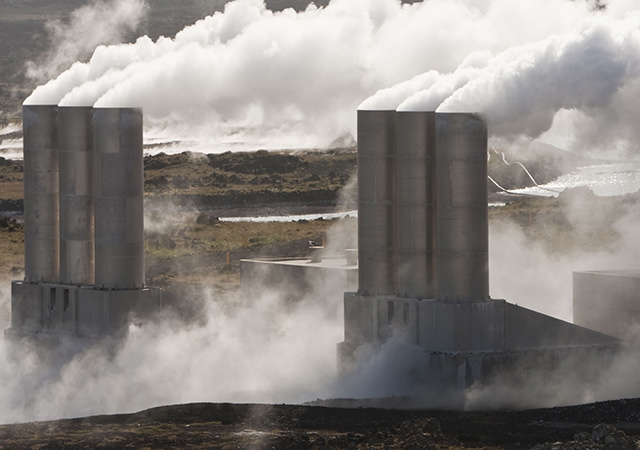
Leading engineers have urged the UK Government to reconsider setting up a geothermal power link between Scotland and Iceland to solve the country’s power needs.
Plans were first mooted three years ago to build a 500MW geothermal plant in Iceland, with a direct power line to Northern Scotland to carry power from the facility under the sea.
Now the Institution of Mechanical Engineers have called for the idea to be looked at again as a short-term solution for providing cost-effective energy for the UK.
The call comes as the National Grid and their Danish counterparts Energinet agreed a deal to look at the feasibility of an electricity interconnector between the UK and Denmark.
The proposed Scotland-Iceland scheme would see a 1200km connection between the Scotland and a plant on Iceland producing up to 1GW – around double the current output of the country.
“Doubling the capacity by 2020 represents a challenge, but is achievable. For example since 2010 in Kenya: 280MW of geothermal is under construction for operation in 2014; 646MW is being procured for 2016; and an additional 495MW is in development for commercial operation in 2018,” the Institution said in its report.
“Similarly in the last seven years, seven projects have been developed in New Zealand with a total installed capacity of 550MW.”
Last year energy minister Charles Hendry signed a memorandum of understanding with his Icelandic counterpart Oddný Harðardottir which included exploring the possibility of electricity links between the two countries.
Geothermal energy provides a significant amount of Iceland’s power, with more than a quarter of their output coming from geothermal sources.
“We know that both national and international geothermal energy sources could benefit the UK, but currently the exploration risks and electricity market regime mean that they are not attractive enough for commercial investigation,” said the Institution’s head of energy, Tim Fox.
“Despite a clear potential for geothermal in the UK, both in heat and power, the support regime here is uncompetitive compared with other European countries.
“The UK Government provides just half the level of support for geothermal energy seen in Germany, where an industry that employed 6,000 people and attracted €4 billion in investment was developed.”
Renewable energy industry body Scottish Renewables welcomed the call for a renewed look at the Iceland-Scotland power line idea.
“Geothermal springs are an ancient source of heating and modern geothermal technology has the potential to be a part of our future energy mix,” said Stephanie Clark, Policy Officer at Scottish Renewables
“We welcome any innovations in the area of renewable heat as heating currently represents over 50% of total energy demand, produces 47% of Scotland’s CO2 emissions and accounts for 60% of domestic energy costs.”
The IMechE report also highlights the strong potential in tapping geothermal power around the UK, including the East Grampian hills, either to provide a direct heating source or to generate electricity.
Scientists have previously identified potential ‘hot rocks’ in areas below Peterhead, Inverurie and Stonehaven that could be tapped to provide energy for the region.
IMechE said making better geological data and helping reducing the risk in tapping geothermal resources would show government commitment to its renewable energy potential.
“The UK needs to catch up and use its world renowned drilling and geoscience expertise to exploit the potential of geothermal source, to help secure energy supplies and provide UK investment and jobs,” said Fox.
“Government needs to reassess its approach and stimulate growth in this area so that the industry can begin to fully exploit its potential.”
Meanwhile the National Grid is to look at the feasibility of a power link-up with Denmark capable of accessing power from Danish wind farms.
The link-up would be the first between the two countries, with the companies set to spend the next year looking at possible routes and budgets for setting up a link between the two countries.
The agreement follows a study in May last year, when National Grid and Energinet.dk agreed to look at the possible benefits of a link-up, and if successful would allow the transmission of up to 1400MW between the two countries.
“Closer integration of the markets can bring benefits to the UK in helping to balance our network,” said National Grid’s Nick Winser.
“However much needs to be done to secure a regulatory framework that will make the interconnector a commercially feasible project.”
Denmark already has interconnectors with Norway, Sweden and Germany, and is looking at the feasibility of a link to the Netherlands.
Recommended for you
